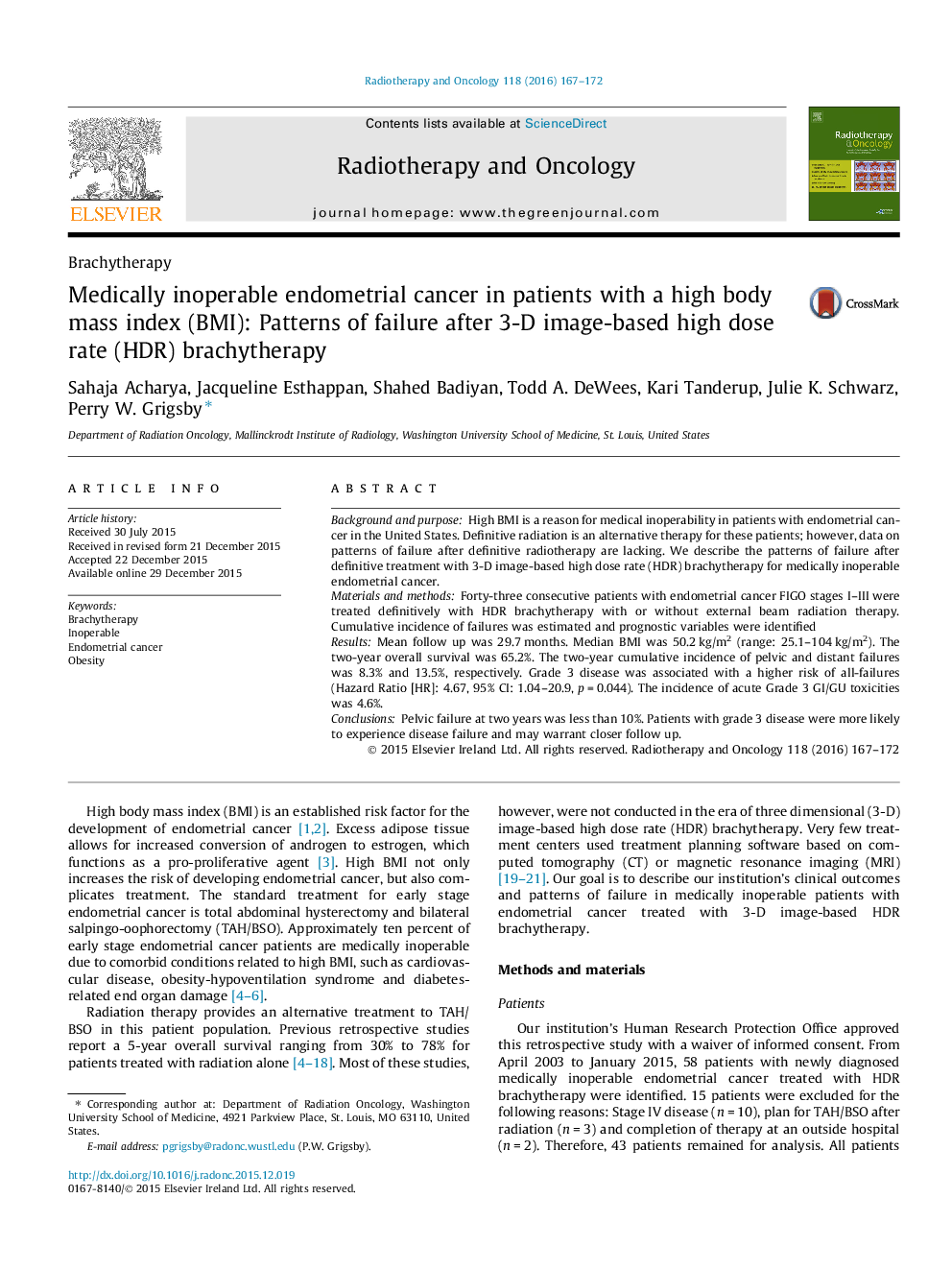| Article ID | Journal | Published Year | Pages | File Type |
|---|---|---|---|---|
| 2157355 | Radiotherapy and Oncology | 2016 | 6 Pages |
Background and purposeHigh BMI is a reason for medical inoperability in patients with endometrial cancer in the United States. Definitive radiation is an alternative therapy for these patients; however, data on patterns of failure after definitive radiotherapy are lacking. We describe the patterns of failure after definitive treatment with 3-D image-based high dose rate (HDR) brachytherapy for medically inoperable endometrial cancer.Materials and methodsForty-three consecutive patients with endometrial cancer FIGO stages I–III were treated definitively with HDR brachytherapy with or without external beam radiation therapy. Cumulative incidence of failures was estimated and prognostic variables were identifiedResultsMean follow up was 29.7 months. Median BMI was 50.2 kg/m2 (range: 25.1–104 kg/m2). The two-year overall survival was 65.2%. The two-year cumulative incidence of pelvic and distant failures was 8.3% and 13.5%, respectively. Grade 3 disease was associated with a higher risk of all-failures (Hazard Ratio [HR]: 4.67, 95% CI: 1.04–20.9, p = 0.044). The incidence of acute Grade 3 GI/GU toxicities was 4.6%.ConclusionsPelvic failure at two years was less than 10%. Patients with grade 3 disease were more likely to experience disease failure and may warrant closer follow up.
